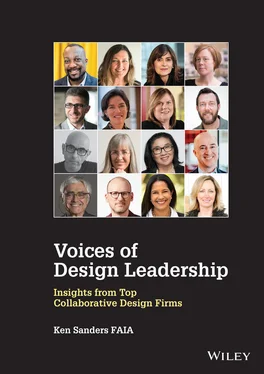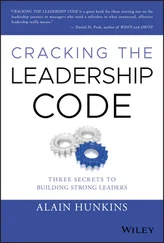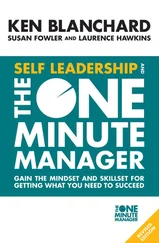Ken Sanders - Voices of Design Leadership
Здесь есть возможность читать онлайн «Ken Sanders - Voices of Design Leadership» — ознакомительный отрывок электронной книги совершенно бесплатно, а после прочтения отрывка купить полную версию. В некоторых случаях можно слушать аудио, скачать через торрент в формате fb2 и присутствует краткое содержание. Жанр: unrecognised, на английском языке. Описание произведения, (предисловие) а так же отзывы посетителей доступны на портале библиотеки ЛибКат.
- Название:Voices of Design Leadership
- Автор:
- Жанр:
- Год:неизвестен
- ISBN:нет данных
- Рейтинг книги:3 / 5. Голосов: 1
-
Избранное:Добавить в избранное
- Отзывы:
-
Ваша оценка:
- 60
- 1
- 2
- 3
- 4
- 5
Voices of Design Leadership: краткое содержание, описание и аннотация
Предлагаем к чтению аннотацию, описание, краткое содержание или предисловие (зависит от того, что написал сам автор книги «Voices of Design Leadership»). Если вы не нашли необходимую информацию о книге — напишите в комментариях, мы постараемся отыскать её.
Voices of Design Leadership
Voices of Design Leadership
Voices of Design Leadership — читать онлайн ознакомительный отрывок
Ниже представлен текст книги, разбитый по страницам. Система сохранения места последней прочитанной страницы, позволяет с удобством читать онлайн бесплатно книгу «Voices of Design Leadership», без необходимости каждый раз заново искать на чём Вы остановились. Поставьте закладку, и сможете в любой момент перейти на страницу, на которой закончили чтение.
Интервал:
Закладка:
Today, the competitive bar is much higher. Idea, Service, and Delivery are table stakes now. What still varies between successful firms is the balance between Practice and Business. In general, Practice-Centered Businesses are led by professionals who have a qualitative bottom line, based on the quality, impact, and recognition of their work. Business-Centered Practices, on the other hand, are led by professionals who have a quantitative bottom line and are more focused on financial rewards for the firm and themselves.
These are not binary choices but instead endpoints on a spectrum. As a conceptual framework, the spectrum between the two can inform a healthy dialogue about where your firm resides today, where it seeks to reside in the future, and the strategies required to move along the spectrum in one direction or the other.
There is no judgment here, by the way. Successful firms exist in a variety of locations along the practice-business spectrum. Firms such as AECOM or Jacobs, both publicly held corporations that have grown primarily through acquisition, are closer to Business-Centered Practices. A firm such as MASS Design Group, a non-profit dedicated to offering design services to the underserved, is closer to a Practice-Centered Business.
Do AECOM and Jacobs care about design quality? Of course. Does MASS Design Group care about business success? Absolutely. If a firm focuses too much attention on one at the expense of the other, it will not survive very long. The question is one of proportion. In your firm, how does the balance between business and practice influence your pursuit of clients and projects, your recruitment and retention of talent, and your day-to-day decision-making?
If your answer is that both are equally important, you are marketing to yourself. Design leaders and their teams make decisions every day that sacrifice revenue or margins for the benefit of design quality. Other decisions sacrifice design quality in exchange for improved financial performance. The issue is organizational awareness and judgment. What are the trade-offs? And how are such decisions made at your firm?
Simple Questions
To determine where your firm resides on the practice-business spectrum, some simple questions can assist. For example, is your firm willing to provide services as Architect-of-Record (AOR) or Associate Architect in the absence of a significant design role? Among firms with leaders profiled in this book, Gensler and HKS do, while ZGF and Skidmore, Owings & Merrill do not.
Again, there is no judgment here. Firms who undertake AOR-only services believe that in some circumstances – beyond the revenue and margins generated – such work provides one or more tangible benefits. These might include developing a relationship with an important new client, or establishing a foothold in a geography, market, or project type where the firm’s reputation is underdeveloped. Firms who avoid AOR-only services, on the other hand, generally seek to avoid diluting their design reputation and prefer to keep their technical talent focused on their own design work. Both perspectives are valid. But firms willing to undertake AOR-only services tend to sit closer to the Business-Centered Practice edge of the scale, compared to peers that do not.
Another question: to what degree is your firm strongly invested in the craft of design? Craft demands attention to detail and thoughtful study. That takes time and time is money. Business-Centered Practices generally hold a more pragmatic view about what level of craft and detail is required to achieve strong design. They are more willing to delegate more detail decision-making to third parties such as fabricators and subcontractors.
Externally, the media reinforces a Business-Centered Practice definition of success by publishing regional, national, and international lists ranking top firms by revenue. For example, the Top 10 US architecture firms of 2021, according to Architectural Record and Engineering News-Record ( ENR ), are ranked by revenue as shown here:
| 2021 Rank | 2020 Rank | Firm | Firm Type | Architecture Revenue ($USD millions) |
|---|---|---|---|---|
| 1 | 1 | Gensler | A | 1,320.19 |
| 2 | 2 | Perkins & Will | A | 595.07 |
| 3 | 3 | HDR | EA | 456.11 |
| 4 | 6 | HKS | A | 420.23 |
| 5 | 7 | HOK | AE | 411 |
| 6 | 4 | Jacobs | EAC | 384.16 |
| 7 | 8 | Stantec | EA | 337.33 |
| 8 | 5 | AECOM | EA | 337 |
| 9 | 13 | CannonDesign | AE | 269 |
| 10 | 9 | Skidmore, Owings & Merrill (SOM) | AE | 268.3 |
Does this list show the ten “best” architecture firms? Although organic growth generally correlates to client satisfaction and market differentiation, the answer is no. Some firms, such as Gensler and SOM, have grown organically over time, while others, such as Jacobs and AECOM, have primarily relied on acquisitions to fuel their growth.
What are your firm’s key metrics of success, and how are they measured and prioritized? Revenue? Margins? Growth? Client delight? Design awards? Sustainable performance? Climate action? Community impact? Career development? Talent health and happiness? Quantitative financial metrics are the easiest to measure. How do you measure the others? The annual Architect 50 published by Architect Magazine was one noteworthy attempt to reach beyond a “ranking by revenue” approach and identify top firms using a blend of measurements focused on business, sustainability, and design. However, the Architect 50 program ceased in 2019.
My suggestion: create your own balanced scorecard aligned with the values, purpose, and vision of your firm – including business performance – and make sure everyone at the firm understands its definition of success.
Poor Excuses
An unfortunate phrase occasionally heard from a design leader who lost a project to a competitor is “our fees were too high.” In most cases, what actually happened was a failure to differentiate. In the absence of strong relationships, reputation, or competitive advantage – real or perceived – lower fees usually prevail. Conversely, clearly differentiated value and client experience – whether found in design services, hotels, restaurants, cars, or mobile phones – can and do command higher prices.
So when you hear “our fees were too high,” look behind the curtain for the real culprit. Design leaders who constantly lower their fees in response are engaging in a race to the bottom. It is far better to focus on strong market differentiation, as well as continuous improvement of delivery methods and project management discipline, in order to stay competitive.
Another unfortunate phrase occasionally heard from a design leader defending an unsatisfying result is “well, the client wanted it.” In reality, such outcomes are typically driven less by client want and more by a failure of persuasion. To persuade effectively, design leaders need to understand not only their client’s opinions, but also the interests behind them.
Effective persuasion sometimes means inviting additional partners to the table. In Chapter 11, Rafael Viñoly describes how he defended the exposed concrete exterior finish for 432 Park Avenue by inviting specialists from Portugal to join the design and construction team. He knew that debating aesthetic preferences would be inadequate; instead, he sponsored a path to success. As Rafael explains, “I remember something that Cesar Pelli used to say, which is that essentially what we do is to make decisions. And if a decision is based on if you like it alone, then you have to be really the best liker in the world.”
Читать дальшеИнтервал:
Закладка:
Похожие книги на «Voices of Design Leadership»
Представляем Вашему вниманию похожие книги на «Voices of Design Leadership» списком для выбора. Мы отобрали схожую по названию и смыслу литературу в надежде предоставить читателям больше вариантов отыскать новые, интересные, ещё непрочитанные произведения.
Обсуждение, отзывы о книге «Voices of Design Leadership» и просто собственные мнения читателей. Оставьте ваши комментарии, напишите, что Вы думаете о произведении, его смысле или главных героях. Укажите что конкретно понравилось, а что нет, и почему Вы так считаете.












